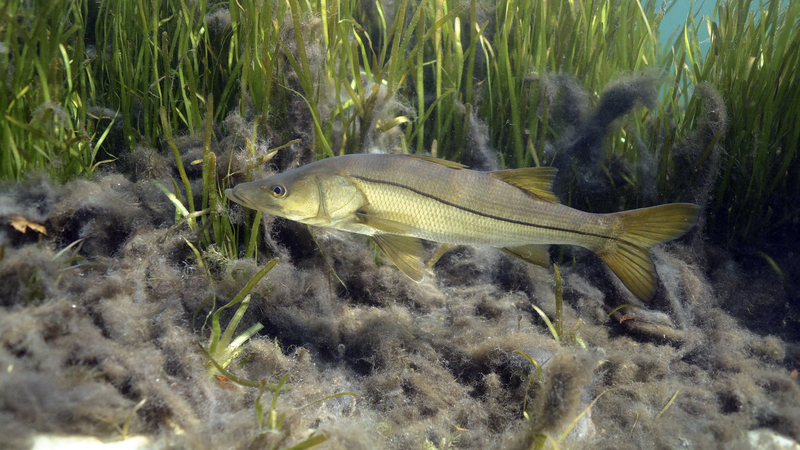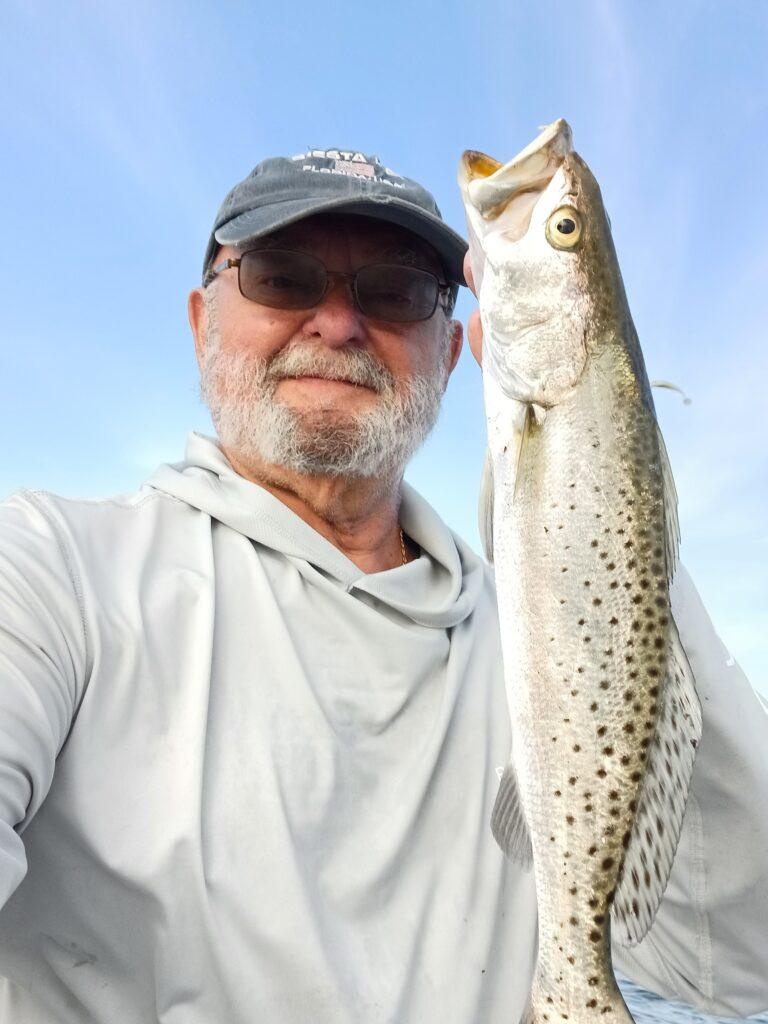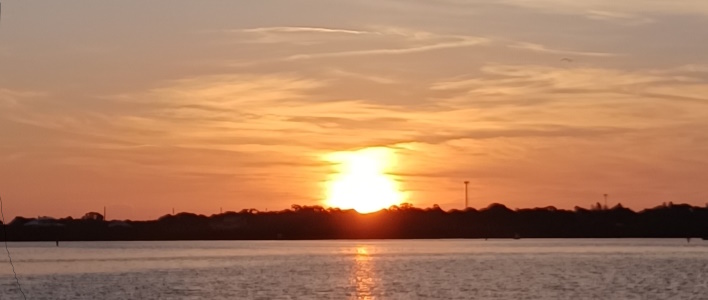
One of my favorite types of fishing involves hunting the Ambush Predators that terrorize the salt flats, grass marshes, and backwater canals along the entire southern coast of the US. My favorite species to chase are Snook, Redfish and Speckled Sea Trout. You might find all 3 lurking among the sea grass in depths of 1 to 4 feet, depending on various conditions like time of day, weather, temperature, wind and tidal current. Each one of these factors deserves its own article as there is a lot of information to be explored. At other times, like a sunny afternoon, you will find Snook under the cover of Mangroves or Docks, such that you’ll want to skip cast with precision under the overhanging cover, by a few feet, if you want a trophy fish to strike.
For the purpose of this article we will discuss how Tides and Tidal Currents affect feeding behavior. After all, it’s a lot easier to catch fish if you know where they are, when they might be feeding, which direction to approach from and how to best present the bait or lure.
Ambush predators in the salt marsh or shallow grass flats along southern coasts, have established patterns that they use to hunt and devour their prey. The tidal currents coupled with the confined area that the prey can escape to, can provide the predator fish, such as Snook, Redfish or Speckled Sea Trout, with a decided advantage. Learning about these patterns, we too can gain a fishing advantage by knowing where to find different types of predator fish in a particular part of the tide cycle, and how to approach and entice them to strike!

Snook Lying in Wait for Prey swept in by the Tide
Saltwater ecosystems boast some of nature’s most cunning hunters. These predators have developed a stealthy playbook, an arsenal of ambush techniques that would impress even the most strategic tactician. It’s not just about brute force—it’s finesse and patience, wrapped in a veil of silent precision.
So imagine this, a Snook lurks just beneath the shadows of a mangrove. With water streaming gently around, its lateral line feels the tremors of a potential snack, while its coloring blends flawlessly with the surrounding murk. This strategic setting isn’t by chance; it’s crafted by eons of evolution.
Ambush predators are masters of disguise. By timing their attacks with the environment—like waiting for the right sunlight angle or the rustle of a drifting seaweed—these creatures maximize their success rate. Ever wonder why some fish have those intricate patterns or why they seem to ‘float’ motionless for hours? It’s all part of staying under the radar until the moment strikes. They also like to conserve energy by allowing the tidal current to bring their food to them.
Fish like Snook, Redfish, and Speckled Trout are all water wolves but each has their own version of the hunting patterns. They lie in wait reading cues and reacting with precision, or simply select hunting grounds that hold the most bait depending on the Tide Cycle.
The Tidal Tango: How Saltwater Predators Use Tides to Their Advantage
Tides are like the heartbeat of saltwater ecosystems. They dictate the rhythm and flow of life for everything under the waves, including the skilled hunters lurking in the depths. These shifts in water levels aren’t random—they create dynamic environments that predators have learned to exploit masterfully.
Take the Snook, for example. During outgoing tides, these silvered hunters position themselves near structures where prey might be swept by the receding current. It’s like being at the end of a buffet line, where the tastiest bits roll right up to their waiting jaws. Outgoing tides, with their water draining antics, also draw small baitfish and crustaceans out of hiding, making them an easy feast for anyone savvy enough to wait on the edges.
Speckled Trout, on the other hand, dance a different dance. When the tide flows over the grass flats, they align themselves facing into the current. This positioning ensures that any unsuspecting prey caught in the flow ends up right in front of them, without much effort needed to fuel the chase. Imagine standing in a stream, with goodies floating by; that’s the genius of their positioning. They generally lay low in the grass and watch for prey moving above them or into open patches between the grass clumps. Then pounce without warning. Sea trout can flip or roll over when they strike a bait, much like sharks, especially when they’re close and actively trying to take it. This is often felt as a “bump” or “flip” of the tail as they suck in the bait.

Redfish, those coppery scavengers of the shallows, know their tidal routines well. As the water ebbs and flows, they adjust their location and feeding times, preferring areas where tidal currents sweep food into their path. The shifting currents create a cycle of opportunity, a natural schedule that they follow with precision.
For anglers, understanding the interplay between tides and predator behavior opens a world of opportunity. Learning to sync with the ‘tidal tango’ means pegging the right time and place to find these crafty creatures. The tides provide a predictability that any serious fishing enthusiast should consider as essential knowledge in their toolkit.
Secrets of the Silent Stalkers: An In-depth Look at Predator Positioning
Positioning is the name of the game in the world of saltwater predators. Hidden in plain sight, these stealthy creatures have mastered the art of picking just the right spot to stage their ambush. It’s all about location, baby, and these fish know it well.
Camouflage plays a crucial role in their stealth tactics. Many ambush predators boast colors or patterns that blend seamlessly with their environments. From the mottled browns of Redfish to the silvery sheen of Snook, each species has its outfit styled by natural selection. It’s not just about blending in but doing so effectively enough to get within striking range without being spotted first.
One thing to take away from this article is that, for the most part, the hunting fish will position themselves such that they face into the oncoming flow of the tidal current. So what does that mean for us anglers? When approaching a school of feeding fish, or even approaching a likely feeding spot, we must stay out of the site line of the predator fish. In deep water this rule is not as important. But in the shallows this rule must be followed if you are to have a chance to hook a big wary fish. The simple solution? Approach from the downstream position so that the fish will be facing away from you. Another rule of thumb is to cast from as far away from your chosen spot as possible. Let your bait or lure “swim” toward the fish, in a natural way, as if it is being pushed by the current. Do not pull your bait against the tide as this looks unnatural which might make the predator wary, and will increase the odds of you spooking the fish.

Battle of the Backwaters: Navigating High Tide Hunting Grounds
High tides paint a whole new landscape, turning shallow waters and backwaters into strategic hotspots for saltwater predators. When the water rises, a whole network of nooks and crannies opens up—perfect for those predators savvy enough to seize the opportunity. For anglers, the trick is knowing where these hidden highways emerge. Snook might find themselves stalking the submerged roots of mangroves, waiting for a careless swim from an unsuspecting baitfish. The Pulsing roots not only serve as cover but also create ambush points as prey navigate the sudden terrain shift.
During these tidal surges, Snook and their peers shift tactics, moving to previously shallow areas that become reachable during high tide. Mangroves become bustling arenas of life, and predators capitalize on this dense population of potential prey.
Redfish, always savvy, love high tides for the access they provide to typically unreachable feeding grounds. This is their moment to push further into the blend of salt and fresh waters, exploiting the rush of nutrients and disoriented prey. The baitfish that have been hiding in 6 inches of water are now accessible. Freshly submerged grasses and flooded tidal pools become prime dining spots where they can feast with minimal effort.
Sea Trout generally stay near grass flats. It’s best to cast into clear spots near the edges of grass lines. The Trout will remain hidden in the grass waiting for an unwary meal to wander into the open.
Understanding these patterns is gold for would-be fishers. High tides mean broader, richer grounds and knowing where these predators like to hunt is key. An effective angler reads the water’s rise, predicts the strategic shifts, and picks their moment and place for the best shot at a solid catch.
Conclusion:
I hope you have enjoyed this article and picked up a few useful tips. Paying attention to the Tide Cycle on any given day is a solid strategy for success!

Tight lines!
John
